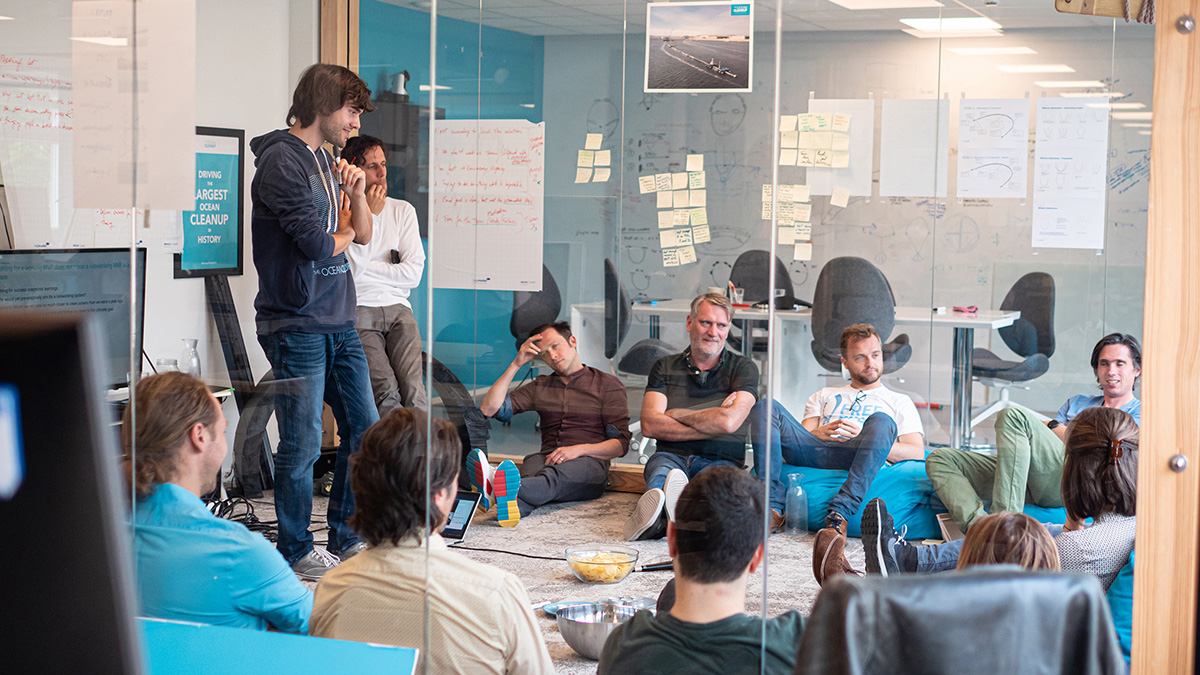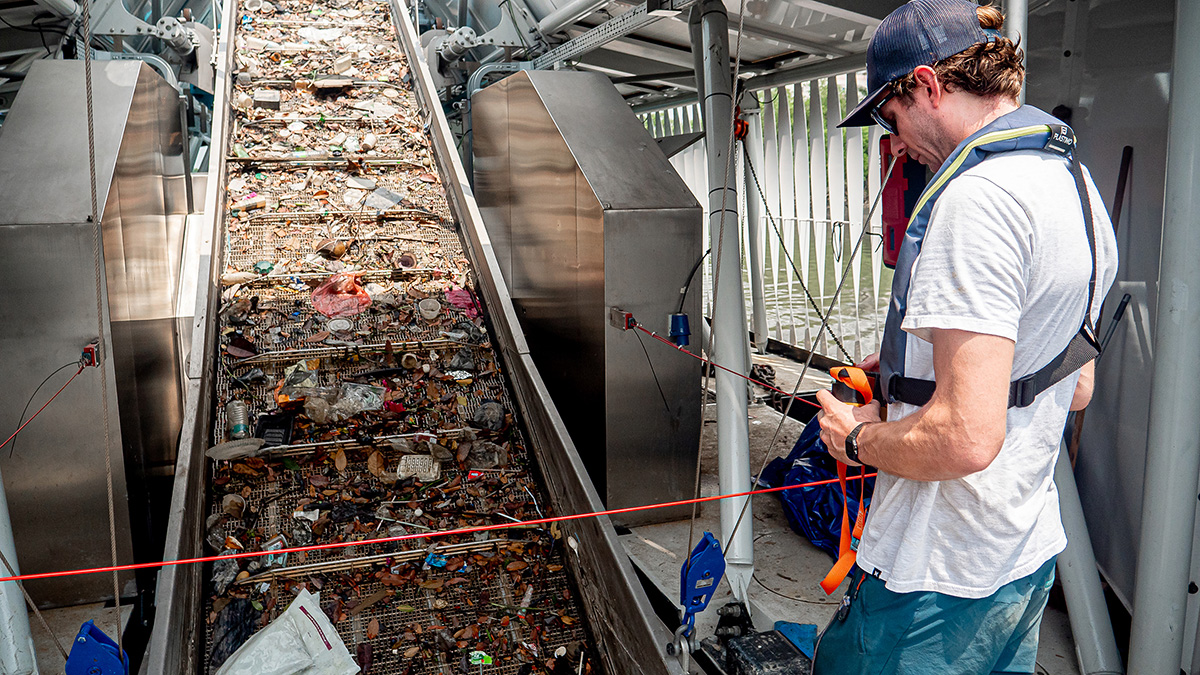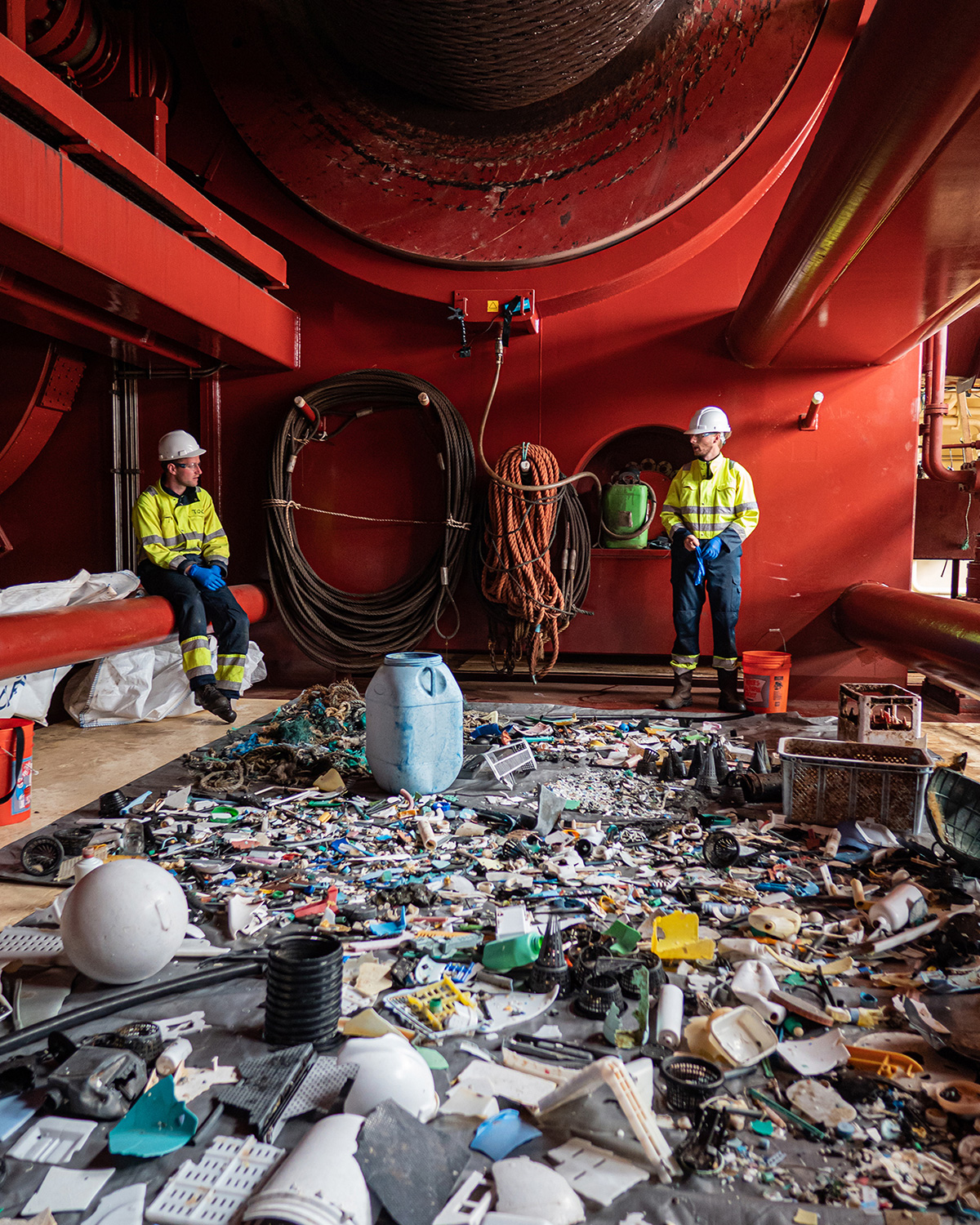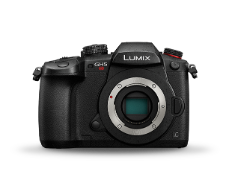
Every year, tons of plastic end up in the rivers and oceans. The Ocean Cleanup is a non-profit organisation that develops technologies to rid the world’s oceans of plastic, not only by cleaning the oceans, but also by preventing plastic from reaching the sea by focusing on river pollution as well. Florent Beauverd and his team photograph the story of The Ocean Cleanup using Panasonic’s LUMIX GH5 and the LUMIX S1 cameras to capture the efforts every step of the way. ‘Our goal is to communicate the story using photographs and video in real time. ‘We want to show the solutions the organisation is working on.’
‘Our choice for Panasonic Lumix cameras was an easy one, as we wanted to take great photos and films using a single camera system, and it had to be able to withstand the challenging weather conditions and be easy to travel with. The LUMIX GH5 and LUMIX S1 are built and designed to deliver outstanding performance in both video and photography, they’re compact, easy to handle, and a joy to work with.’ Florent joined the team three years ago. His task is to document The Ocean Cleanup’s work and share its progress with its followers and donors around the world. Florent explains the technology The Ocean Cleanup uses: ‘Its a passive design that harnesses the wind, currents and waves to our advantage. The system consists of a long floater on the surface of the water with a skirt that hangs beneath it. The floater provides buoyancy, while the skirt prevents debris from escaping and guides it into the retention system, or cod end. A cork line above the skirt prevents overtopping and keeps it afloat.
The first phase involves collecting the plastic; the second is extracting the garbage. The system has to move slower than the current to collect the plastic, so we use a sea anchor to increase the drag. Because the system is energy neutral – it works thanks to natural forces (wind, waves and currents) – it doesn’t need an external energy source.’ In addition to cleaning the oceans, the organisation aims to stop plastic from entering the sea at one of its main sources: rivers. ‘With the newly announced Interceptor, we have a system that can clean rivers. Two Interceptors have already been installed in rivers in Indonesia and Malaysia. These are exciting times for the organisation but also for us content creators. Sharing the organisation’s new work on different channels is essential: it’s a completely new story, and moreover, we have to show the public and our many donors our impact.
Florent travels a lot to get his images and videos: ‘You don’t want to miss important achievements in the field. It’s a case of being in the right place at the right time and having the proper equipment for any type of situation.’ Thanks to their versatility, LUMIX cameras have become an integral part of the organisation’s production workflow and are being used for all sorts of formats and communication. Beauverd: ‘From the highest quality documentary shoots to the vertical clips for Instagram stories, we basically use all of them all the time. And if we have nothing to shoot, we often lend the cameras to the engineers or scientists who use them for all sorts of fieldwork or system inspections.
Panasonic’s LUMIX cameras offer so many advantages and features for both the demanding photographer and the advanced filmmaker. Whether filming on a small rescue boat with all its challenges at sea or are documenting an interview on location, LUMIX cameras never let us down. Especially features like the Dual I.S.2 in body image stabilisation, the outstanding 4K 10bit 4:2:2 video resolution and the low-light image performance of the LUMIX S1 sensor are vital in many situations. They provide us with the full potential to capture and share the story and progress of The Ocean Cleanup.'

The Ocean Cleanup
The Ocean Cleanup was founded in 2013 by Boyan Slat. What started out as a one-man enterprise grew over the years. In 2019, The Ocean Cleanup became a non-profit organisation with 85 employees. The team consists of engineers, researchers, scientists, computer modellers, and non-technical experts working together on solutions that will hopefully rid the world's oceans of plastic.









